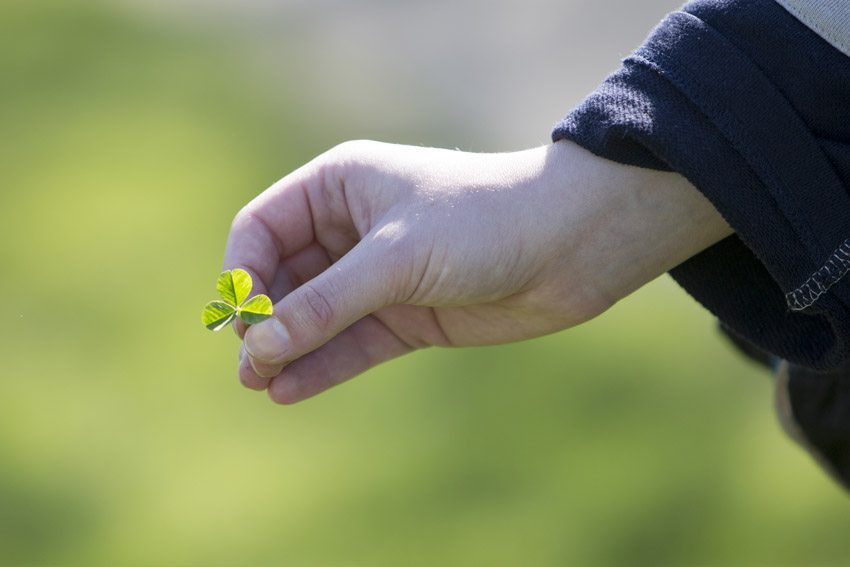Saint Patrick’s Day, like many holidays of its kind, has lost it’s original meaning over the years. Today the holiday is about the celebration of Irish culture. There are parades, people wearing green, and Irish food such as corned beef is commonly served. The origins of this holiday however are far more intricate than meets the eye.

Saint Patrick, the holiday’s namesake and patron saint of Ireland, is not even Irish. He was in fact a Briton, living in Roman occupied Britain, who at the age of sixteen was kidnapped by Irish raiders. The legend says that he was a slave for many years in Ireland, until he had a vision inspired by God that told him to leave for the coast.
Julia Fikse ‘19 discussed Saint Patrick’s day history. Fikse believes the more you know about a holiday, the more you can appreciate it’s meaning.
“St. Patrick was kidnapped when he was young and didn’t escape until later.” Fikse said. He went back to Ireland to become a missionary and risked his life to spread Christianity. I think people should celebrate St. Patrick’s Day by remembering what he did for God. We should celebrate by following his example of sharing the Bible to people who might not get a chance to hear it otherwise.”
When he got to the coast he was picked up by some English sailors and went back to England. Once he got home he reportedly had another vision that told him become a missionary to Ireland. He trained to become a priest and then left for Ireland. His mission was to minister to the Christians in Ireland and to bring the pagan people of Ireland to Christ.
He returned to Ireland and brought many of the people there to Christ. He is said to have used the shamrock, or three leaf clover to represent the trinity. Saint Patrick was said to have died on the 17th of March, and was later declared the Patron Saint of Ireland.

Some students can recall the history behind the holiday. Josiah Weimer ‘16 spoke about what he knew about Saint Patrick’s day.
“St. Patrick’s Day was set apart as a remembrance of the life of St. Patrick.” Weimer said. “St. Patrick is known for bringing the gospel to the Irish people, who at that time, worshiped pagan deities. He used the three leafed shamrock to illustrate the Trinity, and was responsible for converting many Irish to Christianity. While he was young, he was kidnapped by Irish raiders and became a slave to a shepherd. During this time in his life, he became a Christian.”
Later in history this day became a religious holiday during Lent. People would attend church and then have a feast. On this day all fasting restrictions on meat were lifted and the people ate traditional Irish food, like Bacon and Cabbage (this was a precursor to corn beef and cabbage).
This holiday later became a way to show one’s political sympathies. In the 1800s people started wearing clovers as a way to show off their allegiance to Irish nationalism and Catholicism. This later translated to wearing green a color closely associated with Ireland, which was also known as the Emerald Isle.
Cate VanderKooi ‘16 talked about what she does on Saint Patrick’s day.
“I don’t really do anything to celebrate Saint Patrick’s day, except wear green,” VanderKooi said. “However my favorite part about Saint Patrick’s day is that everybody wears green, so for the entire day the whole school is color coordinated. I think people should celebrate this holiday by taking the day off and remembering what Saint Patrick did.”
This holiday became what it is today when Irish people in America began to have parades on Saint Patrick’s day. These parades were used to combat discrimination, since the Irish had been discriminated against and considered ‘low life’s’ for many years. Parades combated such discrimination, by showing pride in Irish culture as well as the political strength of the Irish people.
Others know more about the current traditions of the event. Jeremiah Sieperda, ‘17, recollected his knowledge of Saint Patrick’s day.

“I don’t know much about the history of Saint Patrick’s day, but I believe I remember that it is the day that commemorates the death of Saint Patrick.” Sieperda said. “I think that people celebrate Saint Patrick’s day by wearing green and some people attend a parade, but that is just based off of where they live. My favorite memory of Saint Patrick’s day was when a student at my school, did a traditional Irish dance which was pretty cool because of its difficulty and it was just impressive.”
There are also many misconceptions about Saint Patrick. For example, he was said to have driven all the snakes out of Ireland. This is considered an allegory by many historians rather than a fact, as it is too cold for snakes to survive in Ireland. Many believe that this actually is talking about how Saint Patrick Christianized Ireland and rid it of the Pagan religions or “snakes”.
Another misconception is associating Saint Patrick with green as he was never known to have worn this color. In fact he was known for wearing a distinct color of blue called Saint Patrick’s blue.
Whether misconceptions or historical accuracy, our traditions have shaped and morphed over the years to become what they are today. These reasons are why we celebrate Saint Patrick’s day the way we do, if not for these events this holiday would not be the same.
This writer used this source for this article: History.com
For more articles please read: Feather takes NYC: day 4 or Mother Mary’s food review
This writer can be reached via Twitter: @matthewsue1 and via email: Matthew Sue.




